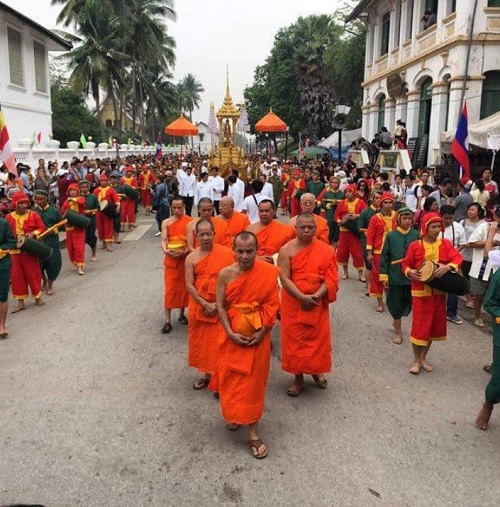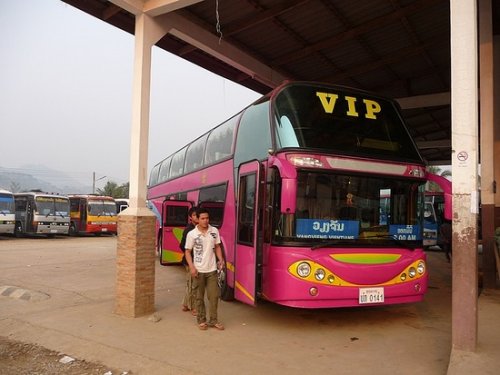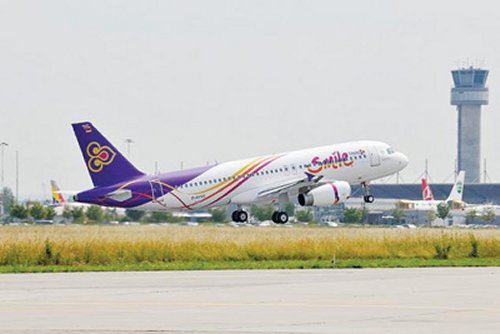Luang Prabang: 20 Years Of World Heritage
Luang Prabang is celebrating its 20th anniversary as a World Heritage Site, listed by UNESCO in 1995, helping to preserve Lao culture.
The 20th anniversary of the World Heritage Site will be celebrated in the midst of the 40th anniversary of our country’s foundation on December 2, 1975.
It is an important year for our country and in Luang Prabang a trade fair will be held on December 5, before conducting several seminars on the protection, conservation, and development of the town as a World Heritage Site from December 7-8.
On December 9, a parade with 6,000 participants will march in Luang Prabang, and a photo exhibition and drawing contest for youth will be held, along with the selling of handicrafts, fresh local produce, cultural performances, and sport events.
These events will put the province and its role as a top tourist destination in the spotlights.
The achievements of the residents of Luang Prabang in protecting, preserving and developing the town to maintain its value, will also be highlighted.
To add more spice to the celebrations, an elephant caravan started travelling at the end of October from Xayaboury province to Luang Prabang and will join the parade on December 9 with 20 elephants.
The caravan is organised by the Lao Elephant Conservation Centre in Xayaboury province and has another important mission. It is a non-profit initiative in support of the conservation of the Asian elephant and aims to raise global awareness of the urgent need to protect Lao elephants as part of the country’s vital cultural and biological heritage.
As the elephants make their way to Luang Prabang, an educational programme will inform local people and foreigners about the history of these great animals in Laos and the need to conserve them.
On top of all these activities, Luang Prabang also organises its sixth film festival on December 5, with a seminar in the afternoon before the festival will officially be opened in the evening.
Luang Prabang is only 400km north from Vientiane, with a history that reaches back to more than thousand years ago, well-preserved for today’s generations.
According to a document of Heritage Office in province, the town of Luang Prabang was established 1,200 years ago. It is situated on a peninsula formed by the Mekong and Nam Khan rivers. Mountain ranges, namely Phou Thao and Phou Nang mountains, encircle the city in lush greenery.
Known as Meuang Xua and afterwards Xieng Thong, from the 14th to 16th century the town was the capital of the powerful Kingdom of Lane Xang (Kingdom of a Million Elephants), whose wealth and influence were related to its strategic location on the Silk Route.
In 1357, the King Fa Ngum (the first king of Lane Xang from 1316 to 1373) requested the Pha Bang Buddha image (sacred buddha) from the King of Cambodia to be placed in Muang Viengkham.
In 1489, the Pha Bang image moved to Meuang Xieng Thong for people to worship.
After that Meuang Xieng Thong changed its name to Meuang Luang Prabang honouring the name of the Buddha image, and until present the province is known as Luang Prabang.
The outstanding example of the fusion of traditional architecture and Lao urban structures with th ose built by the European colonial authorities in the 19th and 20th centuries, and its unique, remarkably well-preserved townscape illustrates a key stage in the blending of these two distinct cultural traditions.
The structure of the town is orderly laid to harmonise with the livelihood and tradition of Lao people.
Locals from the province continuously protect and preserve the culture and traditions through their festivals and rituals such as Lao New Year, Boat Racing Festival, End of Buddhist Lent, ethnic group festivals, baci ceremony, almsgiving, moral lessons in temples, and offering food to temples.
It were these striking features that led UNESCO to list the town as a World Heritage Site, among 1,007 World Heritage Sites in 161 countries worldwide.
Further, the province has regularly been voted as ‘Best City’ by Wanderlust Travel Magazine of England. It has received the award on seven occasions from 2006 to 2015 (2006, 2007, 2008, 2010, 2011, 2012 and 2015).
The listing of Luang Prabang as World Heritage also contributed to its economic growth, at an average of 8.2 percent per year, and the average income per person per year is 11.6 million kip (US$1,450).
The number of tourist arrivals also increased from 186,819 tourists in 2007 to 378,999 in 2014. In 2014, the number of accommodation available to tourists reached to 58 hotels and 254 guesthouses with a total 5,634 rooms.
The tourism service of the province expanded to 49 travel agencies and 28 branches in 2014.
Luang Prabang has 86 cultural sites, 34 historical sites and 107 natural sites, all of touristic interest to local and foreign visitors.
Source: Vientiane Times




